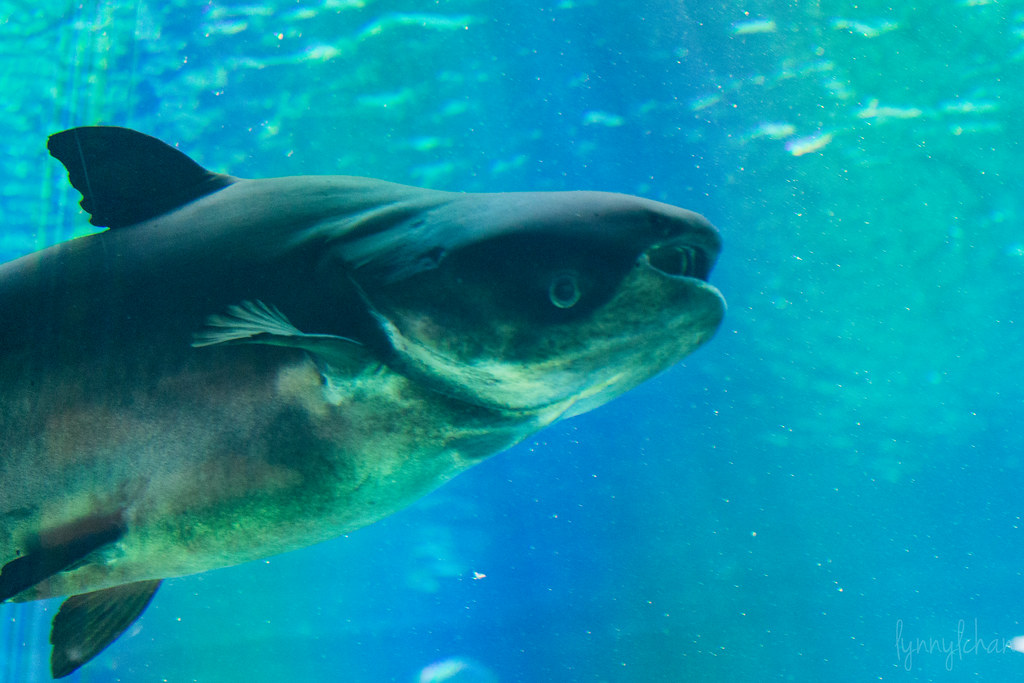Mekong giant catfish (scientific name: Pangasianodon gigas) is a freshwater fish living downstream of Mekong River.
 Grey to white in colour and lacking stripes, the Mekong giant catfish is distinguished from other large catfish species in the river by the near-total lack of barbels and the absence of teeth. This fish has a large and flat head, a wide mouth with long pelvic fins to the caudal fin, and a small dorsal fin in front. The back of the fish is dark brown, and the belly and fins are lighter. The main food of the catfish is aquatic plants. Juvenile fish wear barbels that shrink as they age.
Grey to white in colour and lacking stripes, the Mekong giant catfish is distinguished from other large catfish species in the river by the near-total lack of barbels and the absence of teeth. This fish has a large and flat head, a wide mouth with long pelvic fins to the caudal fin, and a small dorsal fin in front. The back of the fish is dark brown, and the belly and fins are lighter. The main food of the catfish is aquatic plants. Juvenile fish wear barbels that shrink as they age.
 The largest catch ever recorded was in Thailand in 2005. The fish was 2.7m long and weighed 293 kg. They are found in the countries located in the middle and downstream of the Mekong River, such as Cambodia, Vietnam, Laos and Thailand. Scientists have only known about this fish since 1930, when it was “discovered” at a fish market in Phnom Penh (Cambodia).
The largest catch ever recorded was in Thailand in 2005. The fish was 2.7m long and weighed 293 kg. They are found in the countries located in the middle and downstream of the Mekong River, such as Cambodia, Vietnam, Laos and Thailand. Scientists have only known about this fish since 1930, when it was “discovered” at a fish market in Phnom Penh (Cambodia).
 Currently, due to dam projects and overfishing, the number of individuals in the wild of this fish is decreasing significantly. It is classified as critically endangered by the Vietnam Red Book as well as the IUCN Red Book. Laos has enacted a law banning the fishing of Mekong giant catfish, and Cambodia and Thailand are also planning similar measures.
Currently, due to dam projects and overfishing, the number of individuals in the wild of this fish is decreasing significantly. It is classified as critically endangered by the Vietnam Red Book as well as the IUCN Red Book. Laos has enacted a law banning the fishing of Mekong giant catfish, and Cambodia and Thailand are also planning similar measures.
According to Wikipedia.














